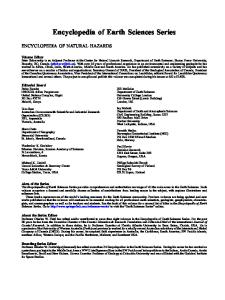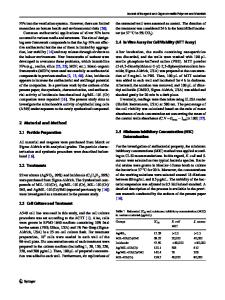Nano-boron as an Antibacterial Agent for Functionalized Textiles
- PDF / 226,251 Bytes
- 5 Pages / 432 x 648 pts Page_size
- 107 Downloads / 397 Views
Nano-boron as an Antibacterial Agent for Functionalized Textiles Wazir Akbara, Ayse Karagoza, G.Bahar Basima*, Mohamed Noorb, Tofail Syedb, Jacob Lumc, Merve Unluagacd a Ozyegin University, Department of Mechanical Engineering, Nisantepe Mevki, Orman Sokak, No 13, Alemdag, Cekmekoy, Istanbul, Turkey b Chemical and Environmental Sciences Department, University of Limerick, Ireland c Oregon State University,Department of Chemical Engineering, 103 Gleeson Hall, Corvallis,97331, Oregon, USA. d Kivanc Tekstil, Mersin Yolu, No: 219, 01210 Seyhan, Adana, Turkiye. ABSTRACT The antibacterial properties of boron-containing compounds are well known although there are limited studies available on the pure boron nanoparticles. In this study boron nano-particles were characterized in terms of their particle size, shape, stability and surface charge before and after they are applied to textile surfaces to study their impact on antibacterial activity in addition to cytotoxicity. It was observed that the boron nano-particles are affective in limiting bacteria growth on both gram-negative and gram-positive species without requiring any stimulation to initiate the antibacterial action. It was also found that the application of boron nano-particles on the textile surfaces through mixing them in hydrophobic finishing solutions helped improve the wettability performance of the textiles while showing no change in the physical and colour fastness properties at an optimal concentration of 0.02 % w/v of finishing solution. INTRODUCTION Textiles have long been known as being prone to growth of microorganisms such as bacteria and fungi. These microorganisms may be present in the environment even at ambient conditions and can quickly grow when the suitable temperature, nutrient and moisture conditions are met. The growth of such microorganisms on textiles causes a range of unwanted effects not only on the textile itself but also on the wearer. These effects include the generation of unpleasant odor, stains and discoloration in the fabric, a reduction in fabric mechanical strength and an increased likelihood of adulteration [1]. Most of the synthetic fibers, due to their high hydrophobicity, are less prone to attacks by microorganisms than natural fibers [2]. The harmful effects can be controlled by applying a durable antimicrobial coating to the textiles by using broad-spectrum biocides or by incorporating the biocide into synthetic fibers during extrusion [1]. However, most biocides used on the commercial textiles can develop bacterial resistance to the substances, which can lead to increased resistance to certain antibiotics in clinical use [3]. Research in antibacterial material containing various natural and inorganic substances has been intensive [4, 5]. There are several commercially available antimicrobial agents such as triclosan, ammonium compounds, zinc pyrithione etc. Metal nanoparticles, such as copper (Cu) and nano silver have been investigated widely because of their large surface area to volume ratio in this quest [6, 7]. Boron n
Data Loading...











